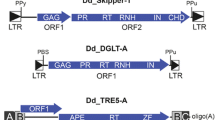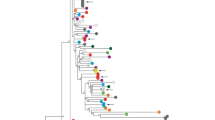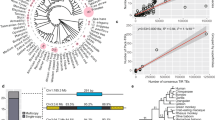Abstract.
Dictyostelium discoideum is a eukaryotic microorganism that is attractive for the study of fundamental biological phenomena such as cell-cell communication, formation of multicellularity, cell differentiation and morphogenesis. Large-scale sequencing of the D. discoideum genome has provided new insights into evolutionary strategies evolved by transposable elements (TEs) to settle in compact microbial genomes and to maintain active populations over evolutionary time. The high gene density (about 1 gene/2.6 kb) of the D. discoideum genome leaves limited space for selfish molecular invaders to move and amplify without causing deleterious mutations that eradicate their host. Targeting of transfer RNA (tRNA) gene loci appears to be a generally successful strategy for TEs residing in compact genomes to insert away from coding regions. In D. discoideum, tRNA gene-targeted retrotransposition has evolved independently at least three times by both non-long termina l repeat (LTR) retrotransposons and retrovirus-like LTR retrotransposons. Unlike the nonspecifically inserting D. discoideum TEs, which have a strong tendency to insert into preexisting TE copies and form large and complex clusters near the ends of chromosomes, the tRNA gene-targeted retrotransposons have managed to occupy 75% of the tRNA gene loci spread on chromosome 2 and represent 80% of the TEs recognized on the assembled central 6.5-Mb part of chromosome 2. In this review we update the available information about D. discoideum TEs which emerges both from previous work and current large-scale genome sequencing, with special emphasis on the fact that tRNA genes are principal determinants of retrotransposon insertions into the D. discoideum genome.
Similar content being viewed by others
Author information
Authors and Affiliations
Additional information
Received 10 May 2002; received after revision 10 June 2002; accepted 12 June 2002
RID="*"
ID="*"Corresponding author.
Rights and permissions
About this article
Cite this article
Winckler, T., Dingermann, T. & Glöckner, G. Dictyostelium mobile elements: strategies to amplify in a compact genome. CMLS, Cell. Mol. Life Sci. 59, 2097–2111 (2002). https://doi.org/10.1007/s000180200010
Issue Date:
DOI: https://doi.org/10.1007/s000180200010




